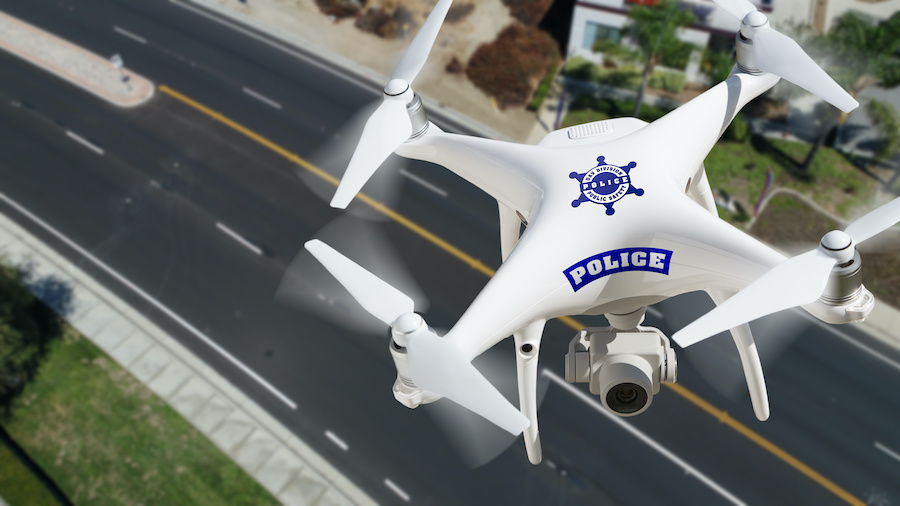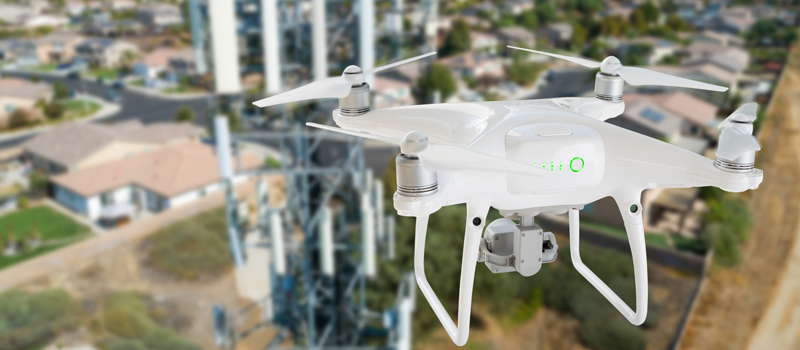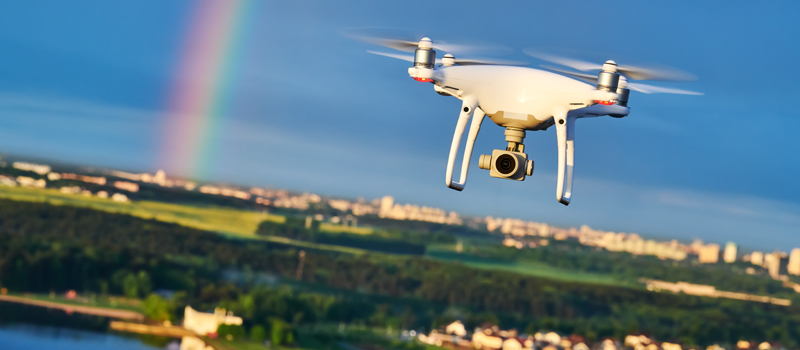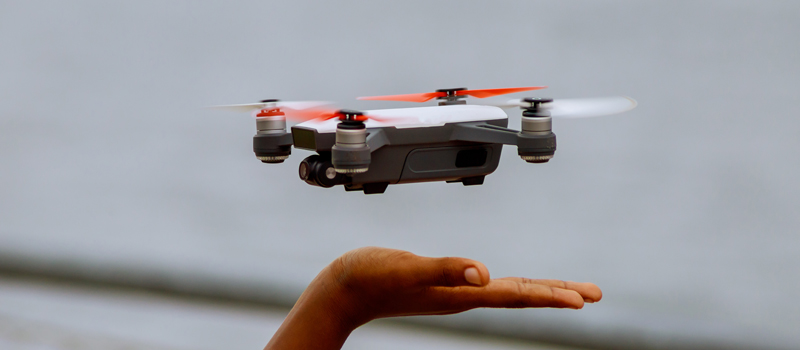-
Part 107 vs. FAA COA
-
Part 107 and Public Safety COA Course
-
Elements to include in a law enforcement drone training program
- 1. Relevant flight rules and restrictions
- 2. The basic theory of drone flight
- 3. Airspace classes and corresponding restrictions
- 4. Weather and its effects on drone performance
- 5. Radio communication standards
- 6. Flight techniques, pre-flight checklists, and emergency procedures
- 7. Night illusions and flying a drone at night
- 8. Flying in indoor spaces
- 9. Systemic hazard identification
- 10. FPV flight
- 11. Thermal camera imaging
- 12. Subject tracking
- 13. Incident investigation and documentation
-
Why use a drone for law enforcement?
- 1. Safer for field agents
- 2. Inexpensive and effective surveillance
- 3. Easy deployment
-
Final thoughts
Drones are pretty much unequaled in the level of surveillance and access that they provide. They can provide a bird’s eye view of any location, get into indoor spaces with little difficulty, and relay images and videos in real-time to the operator. Unlike other forms of surveillance, a drone can be deployed in just a few minutes and does not put the lives of field agents at risk.
For these reasons, law enforcement agencies can greatly benefit from having drones in their toolkit. However, this means having trained drone pilots in their ranks. How can law enforcement properly train drone pilots?
Part 107 vs. FAA COA
Even for law enforcement, the FAA requires that drone use be regulated. This is because drone use for law enforcement falls under the umbrella of ‘commercial use’ or in the aid of an organization’s day-to-day operations. To be more optimistic about it, the FAA has enforced these rules to keep the national airspace safe and drone pilots accountable.
Law enforcement agencies have two options for FAA certification – a Part 107 certificate or an FAA COA. Each option has its benefits and drawbacks.
Part 107 certification is the easier route. It only requires a drone pilot to pass a 60-minute, multiple-choice Part 107 knowledge test and go through a TSA background check. Depending on how much time a drone pilot needs to prepare for the test, the whole process can be finished in less than a month.
The drawback is that the Part 107 knowledge test only covers the basics of drone flight. It also doesn’t require any hands-on drone flight training. A drone pilot working for law enforcement will find the Part 107 requirements vastly inadequate for their line of work.
A Part 107 drone license also has a lot of restrictions that could make law enforcement work difficult. By default, drone flight at nighttime, beyond visual line of sight, and over people is prohibited. Just these three restrictions could render law enforcement drone work almost impossible. Although the FAA allows pilots to apply for waivers for these restrictions, this is not an “instant” process – a waiver request could take several weeks before it can be granted.
The other option is for a law enforcement agency to apply for an FAA Certificate of Authorization (COA). An FAA COA is only granted to units or representatives of the local or federal government. Law enforcement agencies certainly qualify, as do fire departments, public schools, and emergency response teams.
Under an FAA COA, organizations can request for a clearance to fly drones under the circumstances required by their use case. This means that a law enforcement agency can request to be allowed to fly at night or under any other conditions usually prohibited by the Part 107 rules.
The greater flexibility of an FAA COA also comes with more accountability measures. Not only is an FAA COA application more tedious than the Part 107 certification process, but it also requires the organization to provide a monthly report of their drone operations. This added administrative work is something that a law enforcement agency will have to consider before they decide to secure an FAA COA.
One of the unique benefits of an FAA COA is that it allows an organization to self-certify their drone pilots. This means that the drone pilots of a law enforcement agency need not go through outsourced training programs. However, the FAA requires that the applying organization provide a detailed training program and certification standards.
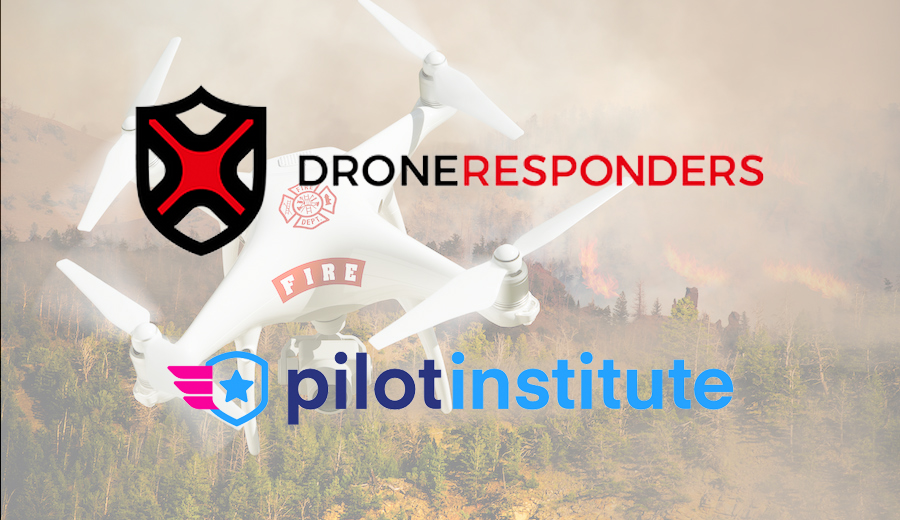
Part 107 and Public Safety COA Course
DRONERESPONDERS, the world’s largest non-profit dedicated to helping public safety drone users and Pilot Institute have partnered to offer the industry’s most comprehensive training.
This first module focuses on passing the FAA’s Part 107 exam and it comes with 15 hours of videos, a cheatsheet, flashcard app, and much more. The second module will dive into Certificate of Authorizations (COAs) and provide you with a roadmap to follow to get your department setup.
Elements to include in a law enforcement drone training program
It’s quite apparent that an FAA COA is the more viable certification option for a law enforcement agency. The self-certification provision can certainly be a huge benefit. The question remains: what makes a good training program for law enforcement? We recommend considering the following elements:
1. Relevant flight rules and restrictions
Assuming that you are training a drone pilot by starting with the basics, knowledge of FAA rules and restrictions on drone flight would be a good groundwork. This lesson should discuss rules such as giving way to manned aircraft, avoiding flying over crowds, staying within an altitude limit, and flying within visual line of sight.
Although some of these restrictions may not apply to law enforcement work, it is still worth understanding them. These rules were crafted by the FAA in the interest of national airspace safety and operating outside them means taking on an acceptable level of risk. Some of these rules, such as staying within an altitude of 400 feet AGL, are meant to avoid close encounters manned aircraft and drones. Even the possibility mid-air collision is unacceptable, even for a drone pilot doing police work.
2. The basic theory of drone flight
Every drone pilot should start by understanding the fundamentals of drone flight. This should include a thorough understanding of the science of aerodynamics and how each component of a drone contributes to helping it achieve flight.
A fundamental understanding of drone flight will help a pilot react to conditions on the field or do basic troubleshooting. In such an unpredictable field as law enforcement, being able to think on their feet is something that a drone pilot should have. By arming them with more knowledge, a law enforcement agency can be assured that their drone pilots will make the right decisions most of the time.
3. Airspace classes and corresponding restrictions
If a law enforcement agency is operating in a major city or a large town, it might be inevitable for them to have to fly drones in controlled or restricted airspace. While law enforcement might be exempted from airspace restrictions that normally apply to drone pilots, a drone pilot working for the police should keep in mind that these restrictions were created for a reason – airspace safety.
Depending on the class of airspace they are flying in, a drone pilot may expect a certain level of airspace traffic. This is something that a drone pilot should consider, as close calls are unacceptable even in the line of duty. If needed, a drone pilot will also need to know the procedure for securing airspace authorization.
4. Weather and its effects on drone performance
As with any type of aircraft, weather conditions can affect how a drone flies. The temperature, humidity, wind speed, and direction are all factors that any drone pilot should consider. Part of this lesson should include being able to interpret standard weather reports (METARs) and forecasts (TAFs) that airport facilities regularly broadcast. Even when responding to an emergency, a drone pilot should be able to assess if drone flight can be carried out safely given the weather conditions.
5. Radio communication standards
Radio communication is a staple lesson in practically any field, whether in aviation, emergency response, or law enforcement. If the drone pilot is not proficient in radio communication standards and language yet, then this is something that should be included in the training program.
When law enforcement agents are out in the field, communication is key to a successful operation. For communication to work, they must also be speaking a common language.
6. Flight techniques, pre-flight checklists, and emergency procedures
When training for law enforcement drone work, significant time must be spent on actual drone flight exercises. This should range from basic maneuvers such as making turns, taking off and landing manually, and flying under different weather conditions. This is going to take time and having an experienced drone flight instructor will certainly come in handy.
Just as important as learning how to fly is making sure that the drone is always in good condition to fly. The best way to do this is to come up with a pre-flight inspection checklist which includes checking for mechanical integrity, the state of the batteries, and a calibration of the drone’s sensor.
When things go wrong in the field, the drone pilot must also have an appropriate response prepared. Do they activate the drone’s return to home function? Will it be too risky to allow the drone to fly back to the original takeoff point? Does the drone have to be retrieved given the risk of the situation? These are things that a drone pilot must be ready for.
7. Night illusions and flying a drone at night
Much of drone flight is done through visual flight rules. This makes certain circumstances challenging, such as when flying at night. Unfortunately, law enforcement might need to respond with drone operations under the very non-ideal conditions of nighttime.
In aviation, certain illusions can be aggravated when flying at night. These can include autokinetic illusion, or the perception of motion from a stationary object, or a somatogravic illusion, or the perception of sudden forward acceleration.
Pilots of manned aircraft can counteract these by using information from their in-flight instruments. Drone pilots have no such benefit. This emphasizes the need to recognize when these night illusions occur so that a drone pilot’s judgment does not become clouded.
8. Flying in indoor spaces
Being able to fly in indoor spaces might be a critical skill for a drone pilot doing police work, especially if they are staking out a building or facility with extreme hazards. However, flying a drone indoors can be very challenging for someone with no experience. Not only does a drone lose GPS reception (which it uses to help with flight stability), but a drone pilot will have to contend with tight spaces and will likely have to deactivate any obstacle avoidance systems.
The good news is that it’s not impossible. Most drones have flight modes which severely limits their flight speed, making it easier to navigate indoor spaces. Still, this is something that even experienced drone pilots have difficulty with. A lot of practice will have to be in order.
9. Systemic hazard identification
Doing drone work for law enforcement means having to fly under exceptionally hazardous conditions. A good example of this is when the Pittsburgh police department used a drone to help survey a house where an active shooter had barricaded himself. Using the drone, the police were able to identify exit and entry points without subjecting their personnel to unnecessary risk.
This is the kind of work that the drone pilot needs to anticipate. Aside from the danger of a person who might actively try to take out the drone, a drone pilot may also need to fly in the dark, in tight spaces, under unfriendly weather, or over the site of a disaster. There are inherent hazards to each situation and identifying them is the first step to risk mitigation.
10. FPV flight
Normally, drones are operated within visual line of sight. For police work, this might not always be possible. The good thing about drones is that they are equipped with high-resolution cameras that transmit a real-time video feed to the controller. In some circumstances, the drone pilot may need to rely on this video feed.
This is known as a fully FPV (first person’s view) flight. It allows the drone pilot to see what the drone’s camera sees but makes them blind to a drone’s surroundings. This is a huge blind spot for the drone pilot, which is precisely the reason why it’s prohibited under normal circumstances. Flying fully in FPV is a completely different experience and one that a drone pilot will have to train for in a friendlier environment.
11. Thermal camera imaging
One of the best accessories for drone use in police work, as in any type of emergency response, is a thermal camera. Drones with thermal cameras have proven to be very valuable in a lot of documented cases around the world, helping police locate missing persons quickly even in areas with poor visibility.
For law enforcement agencies, having thermal imaging capabilities can greatly aid in surveillance or search and rescue operations. In a way, having a drone-mounted thermal camera can give law enforcement a degree of situational awareness that is unparalleled. Given how useful thermal imaging is, a drone pilot will need some technology-specific training to maximize its potential.
12. Subject tracking
One of the best features of many modern camera drones is their ability to identify subjects and track them as they move. This feature uses the drone’s optical sensors along with its GPS receiver to keep a subject within the frame of its camera. This could prove to be an invaluable tool for surveillance work.
Subject tracking is not a standard feature in all drone models. Even for drones that do have this feature, the quality of tracking may vary from one model to another. Consistent subject tracking can also be difficult in areas with poor visibility. To make this feature useful for law enforcement operations, a drone pilot will have to know how the technology works and its limitations.
13. Incident investigation and documentation
One of the ways in which law enforcement agencies use drones is in aid of incident documentation. When responding to a crime scene or a road accident, a drone can be used to fly overhead and take photos and videos of the site faster than photographers on the ground.
A drone pilot can even take this a step further and use photogrammetry technology to construct a 3D model of the investigation scene. This allows police and investigators to come back to the scene of a crime or an accident and make an infinite number of measurements and analyses.
The great thing about using a drone for this purpose is that it can get the job done very quickly. A drone pilot can even set the drone to do this automatically. However, they must also know the proper protocols of law enforcement for crime scene investigation and documentation.
A drone training course with these elements should be enough to cover most of the needs of a law enforcement agency. There are still a couple of other scenarios for which specialized drone training may be needed. If a law enforcement agency foresees having to respond to water rescue or fire rescue emergencies, then they may also look into how drone technology can be utilized.
Why use a drone for law enforcement?
Crafting a training program for drone pilots is going to take a lot of work. There’s also a sizable investment to acquire high-end drones that are suitable for the job. Why should a law enforcement agency be compelled to augment their forces with drones?
1. Safer for field agents
The number one reason for drone use is that it reduces the level of risk that officers are exposed to when out in the field. From merely surveying the area to identifying active shooters, drones can collect a ton of useful information while the officers are kept at a safe distance. Even when the officers have to move in, having a drone fly over the scene gives them a much higher level of situational awareness.
Lives are invaluable, and the mere possibility of keeping officers safe should be enough of an incentive to invest in drones.
2. Inexpensive and effective surveillance
There is no question about the efficacy of aerial surveillance. It has always been a useful tool for law enforcement, the military, search and rescue, and other emergency responders. Right now, drones are some of the most inexpensive forms of aerial surveillance available. Compared to helicopters and other manned aircraft, the cost of a drone is but a mere fraction.
3. Easy deployment
Another advantage of using drones instead of a manned aircraft is that it can be deployed in just a few minutes, even if the drone pilot does a pre-flight inspection. In contrast, a helicopter will need to go through a long list of checks and secure airspace clearance before it can take off. In situations where every second counts, the quick deployment of a drone may be what it takes to save a couple of lives.
Final thoughts
They say that the evolution of technology is inevitable and that an organization that fails to adapt is doomed to fail. The same can be said of law enforcement. A drone is a great way to modernize the capabilities of any law enforcement agency.
The good news is that the FAA allows law enforcement agencies to formally train and certify their own drone pilots, given that they can craft a good training program. This is going to take a lot of work, but we hope that our recommendations here provide a good starting point.
